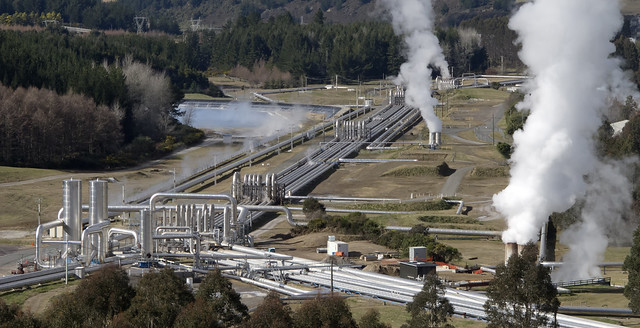 |
| Wairakei in winter. By Duncan Foley. Pipe to Powerplant at Wairakei outlook taken July 27, 2012. GRC Photo Contest 2012. |
In 2012, construction of the world’s first bioreactor was completed along the Waikato River in New Zealand.
The purpose of the bioreactor is to mitigate the environmental impact of the Wairakei Power Station that is situated on the river. The success of this bioreactor has made it a potential model for similar technology to be produced in the United States.
The Wairakei Power Station is a geothermal power station located in the North Island of New Zealand. The station is situated on the Waikato River, so it can utilize the river water to cool the geothermal fluid that is extracted in order to generate electricity. However, after usage in the cooling process, pollutants from the plant are introduced into the water. Releasing the polluted fluid back into the Waikato River is damaging to the natural river ecosystem, especially as a threat to local biodiversity.
In an effort to reverse the detrimental environmental impact of the plant, the Wairakei bioreactor was conceived. The bioreactor is made up of 378 km of underground pipes that house bacteria on their internal surface area.